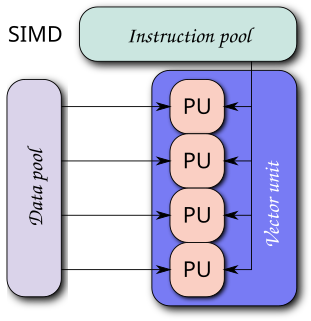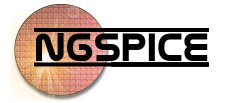| Developer(s) | Sven Verdoolaege, INRIA and others |
|---|---|
| Stable release | 0.25 / July 3, 2022 [1] |
| Available in | C |
| Type | Mathematical software |
| License | MIT |
| Website | libisl |
isl (integer set library) is a portable C library for manipulating sets and relations of integer points bounded by linear constraints. [2]
The following operations are supported: [3]
It also includes an ILP solver based on generalized basis reduction, transitive closures on maps (which may encode infinite graphs), dependence analysis and bounds on piecewise step-polynomials.
All computations are performed in exact integer arithmetic using GMP or imath.
Many program analysis techniques are based on integer set manipulations. The integers typically represent iterations of a loop nest or elements of an array. isl uses parametric integer programming to obtain an explicit representation in terms of integer divisions.
It is used as backend polyhedral library in the GCC Graphite framework [4] and in the LLVM Polly framework [5] for loop optimizations.
OCaml is a general-purpose, multi-paradigm programming language which extends the Caml dialect of ML with object-oriented features. OCaml was created in 1996 by Xavier Leroy, Jérôme Vouillon, Damien Doligez, Didier Rémy, Ascánder Suárez, and others.

Single instruction, multiple data (SIMD) is a type of parallel processing in Flynn's taxonomy. SIMD can be internal and it can be directly accessible through an instruction set architecture (ISA), but it should not be confused with an ISA. SIMD describes computers with multiple processing elements that perform the same operation on multiple data points simultaneously.
The GNU Compiler for Java (GCJ) is a free compiler for the Java programming language. It was part of the GNU Compiler Collection for over ten years but as of 2017 it is no longer maintained and will not be part of future releases.

OpenMP is an application programming interface (API) that supports multi-platform shared-memory multiprocessing programming in C, C++, and Fortran, on many platforms, instruction-set architectures and operating systems, including Solaris, AIX, FreeBSD, HP-UX, Linux, macOS, and Windows. It consists of a set of compiler directives, library routines, and environment variables that influence run-time behavior.

LLVM is a set of compiler and toolchain technologies that can be used to develop a front end for any programming language and a back end for any instruction set architecture. LLVM is designed around a language-independent intermediate representation (IR) that serves as a portable, high-level assembly language that can be optimized with a variety of transformations over multiple passes.
Open64 is a free, open-source, optimizing compiler for the Itanium and x86-64 microprocessor architectures. It derives from the SGI compilers for the MIPS R10000 processor, called MIPSPro. It was initially released in 2000 as GNU GPL software under the name Pro64. The following year, University of Delaware adopted the project and renamed the compiler to Open64. It now mostly serves as a research platform for compiler and computer architecture research groups. Open64 supports Fortran 77/95 and C/C++, as well as the shared memory programming model OpenMP. It can conduct high-quality interprocedural analysis, data-flow analysis, data dependence analysis, and array region analysis. Development has ceased, although other projects can use the project's source.
An intermediate representation (IR) is the data structure or code used internally by a compiler or virtual machine to represent source code. An IR is designed to be conducive to further processing, such as optimization and translation. A "good" IR must be accurate – capable of representing the source code without loss of information – and independent of any particular source or target language. An IR may take one of several forms: an in-memory data structure, or a special tuple- or stack-based code readable by the program. In the latter case it is also called an intermediate language.

Mathomatic is a free, portable, general-purpose computer algebra system (CAS) that can symbolically solve, simplify, combine, and compare algebraic equations, and can perform complex number, modular, and polynomial arithmetic, along with standard arithmetic. It does some symbolic calculus, numerical integration, and handles all elementary algebra except logarithms. Trigonometric functions can be entered and manipulated using complex exponentials, with the GNU m4 preprocessor. Not currently implemented are general functions like f(x), arbitrary-precision and interval arithmetic, and matrices.

Ngspice is an open-source mixed-level/mixed-signal electronic circuit simulator. It is a successor of the latest stable release of Berkeley SPICE, version 3f.5, which was released in 1993. A small group of maintainers and the user community contribute to the ngspice project by providing new features, enhancements and bug fixes.
Interprocedural optimization (IPO) is a collection of compiler techniques used in computer programming to improve performance in programs containing many frequently used functions of small or medium length. IPO differs from other compiler optimizations because it analyzes the entire program; other optimizations look at only a single function, or even a single block of code.
The polyhedral model is a mathematical framework for programs that perform large numbers of operations -- too large to be explicitly enumerated -- thereby requiring a compact representation. Nested loop programs are the typical, but not the only example, and the most common use of the model is for loop nest optimization in program optimization. The polyhedral method treats each loop iteration within nested loops as lattice points inside mathematical objects called polyhedra, performs affine transformations or more general non-affine transformations such as tiling on the polytopes, and then converts the transformed polytopes into equivalent, but optimized, loop nests through polyhedra scanning.
Clang is a compiler front end for the C, C++, Objective-C, and Objective-C++ programming languages, as well as the OpenMP, OpenCL, RenderScript, CUDA, and HIP frameworks. It acts as a drop-in replacement for the GNU Compiler Collection (GCC), supporting most of its compilation flags and unofficial language extensions. It includes a static analyzer, and several code analysis tools.
Use of the polyhedral model within a compiler requires software to represent the objects of this framework and perform operations upon them.
In computer software and hardware, find first set (ffs) or find first one is a bit operation that, given an unsigned machine word, designates the index or position of the least significant bit set to one in the word counting from the least significant bit position. A nearly equivalent operation is count trailing zeros (ctz) or number of trailing zeros (ntz), which counts the number of zero bits following the least significant one bit. The complementary operation that finds the index or position of the most significant set bit is log base 2, so called because it computes the binary logarithm ⌊log2(x)⌋. This is closely related to count leading zeros (clz) or number of leading zeros (nlz), which counts the number of zero bits preceding the most significant one bit. There are two common variants of find first set, the POSIX definition which starts indexing of bits at 1, herein labelled ffs, and the variant which starts indexing of bits at zero, which is equivalent to ctz and so will be called by that name.
For several years parallel hardware was only available for distributed computing but recently it is becoming available for the low end computers as well. Hence it has become inevitable for software programmers to start writing parallel applications. It is quite natural for programmers to think sequentially and hence they are less acquainted with writing multi-threaded or parallel processing applications. Parallel programming requires handling various issues such as synchronization and deadlock avoidance. Programmers require added expertise for writing such applications apart from their expertise in the application domain. Hence programmers prefer to write sequential code and most of the popular programming languages support it. This allows them to concentrate more on the application. Therefore, there is a need to convert such sequential applications to parallel applications with the help of automated tools. The need is also non-trivial because large amount of legacy code written over the past few decades needs to be reused and parallelized.
asm.js is a subset of JavaScript designed to allow computer software written in languages such as C to be run as web applications while maintaining performance characteristics considerably better than standard JavaScript, which is the typical language used for such applications.
Objective-C is a general-purpose, object-oriented programming language that adds Smalltalk-style messaging to the C programming language. Originally developed by Brad Cox and Tom Love in the early 1980s, it was selected by NeXT for its NeXTSTEP operating system. Objective-C was the standard programming language supported by Apple for developing macOS and iOS applications using their respective application programming interfaces (APIs), Cocoa and Cocoa Touch, until the introduction of Swift in 2014.
In computer science, code motion, also known as code hoisting, code sinking, loop-invariant code motion, or code factoring, is a blanket term for any process that moves code within a program for performance or size benefits, and is a common optimization performed in most optimizing compilers. It can be difficult to differentiate between different types of code motion, due to the inconsistent meaning of the terms surrounding it.